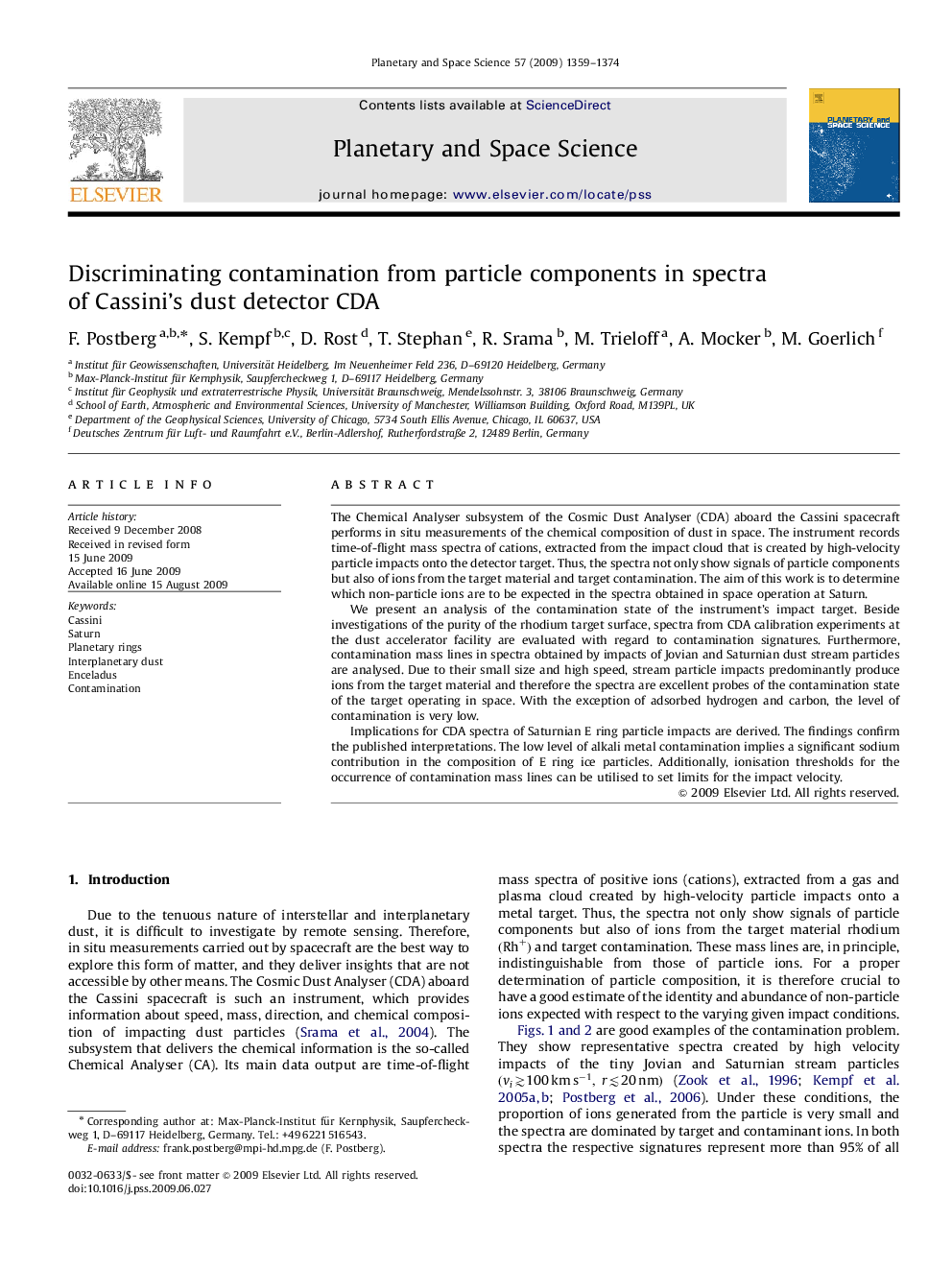| Article ID | Journal | Published Year | Pages | File Type |
|---|---|---|---|---|
| 1782042 | Planetary and Space Science | 2009 | 16 Pages |
The Chemical Analyser subsystem of the Cosmic Dust Analyser (CDA) aboard the Cassini spacecraft performs in situ measurements of the chemical composition of dust in space. The instrument records time-of-flight mass spectra of cations, extracted from the impact cloud that is created by high-velocity particle impacts onto the detector target. Thus, the spectra not only show signals of particle components but also of ions from the target material and target contamination. The aim of this work is to determine which non-particle ions are to be expected in the spectra obtained in space operation at Saturn.We present an analysis of the contamination state of the instrument's impact target. Beside investigations of the purity of the rhodium target surface, spectra from CDA calibration experiments at the dust accelerator facility are evaluated with regard to contamination signatures. Furthermore, contamination mass lines in spectra obtained by impacts of Jovian and Saturnian dust stream particles are analysed. Due to their small size and high speed, stream particle impacts predominantly produce ions from the target material and therefore the spectra are excellent probes of the contamination state of the target operating in space. With the exception of adsorbed hydrogen and carbon, the level of contamination is very low.Implications for CDA spectra of Saturnian E ring particle impacts are derived. The findings confirm the published interpretations. The low level of alkali metal contamination implies a significant sodium contribution in the composition of E ring ice particles. Additionally, ionisation thresholds for the occurrence of contamination mass lines can be utilised to set limits for the impact velocity.
